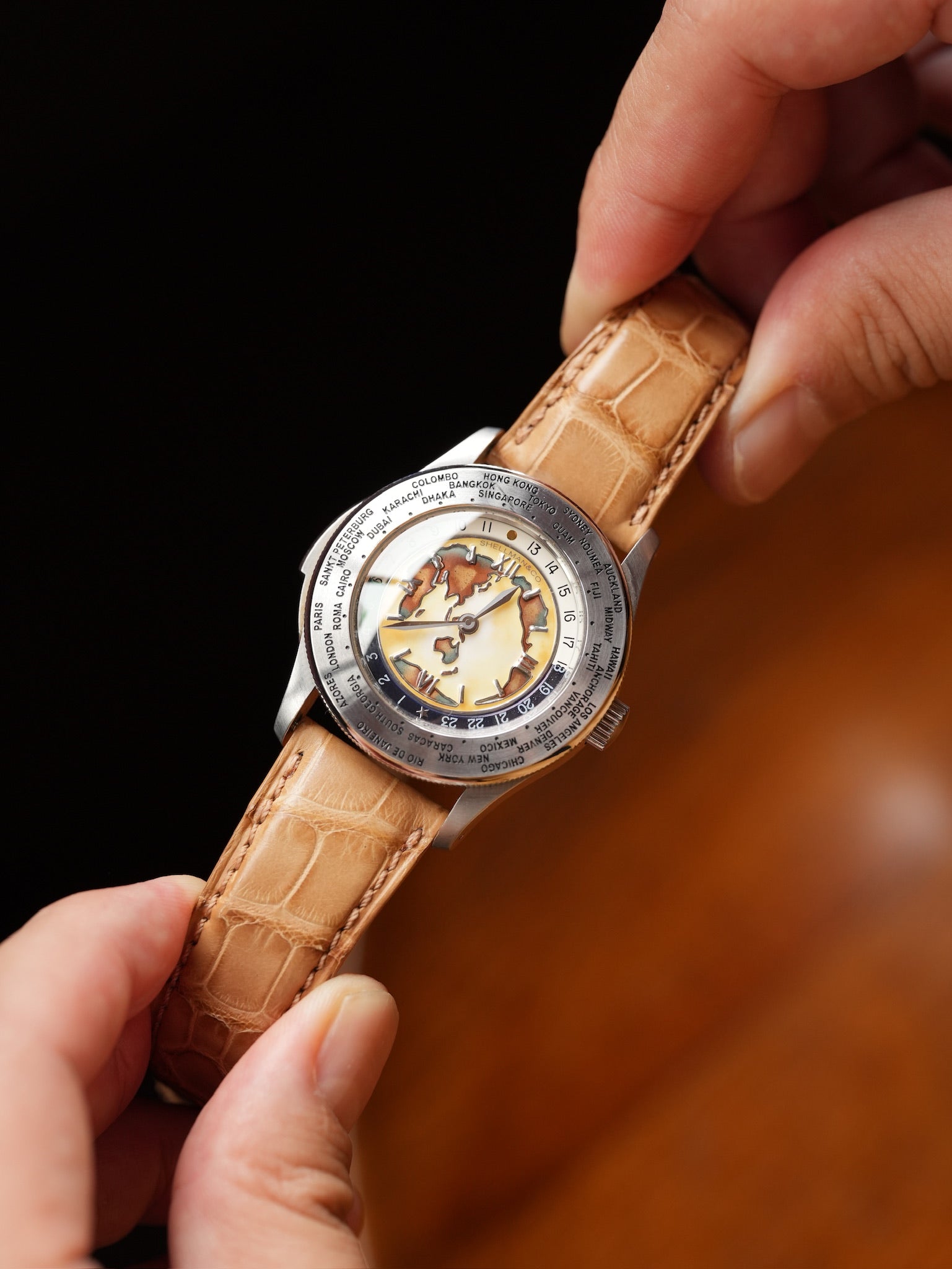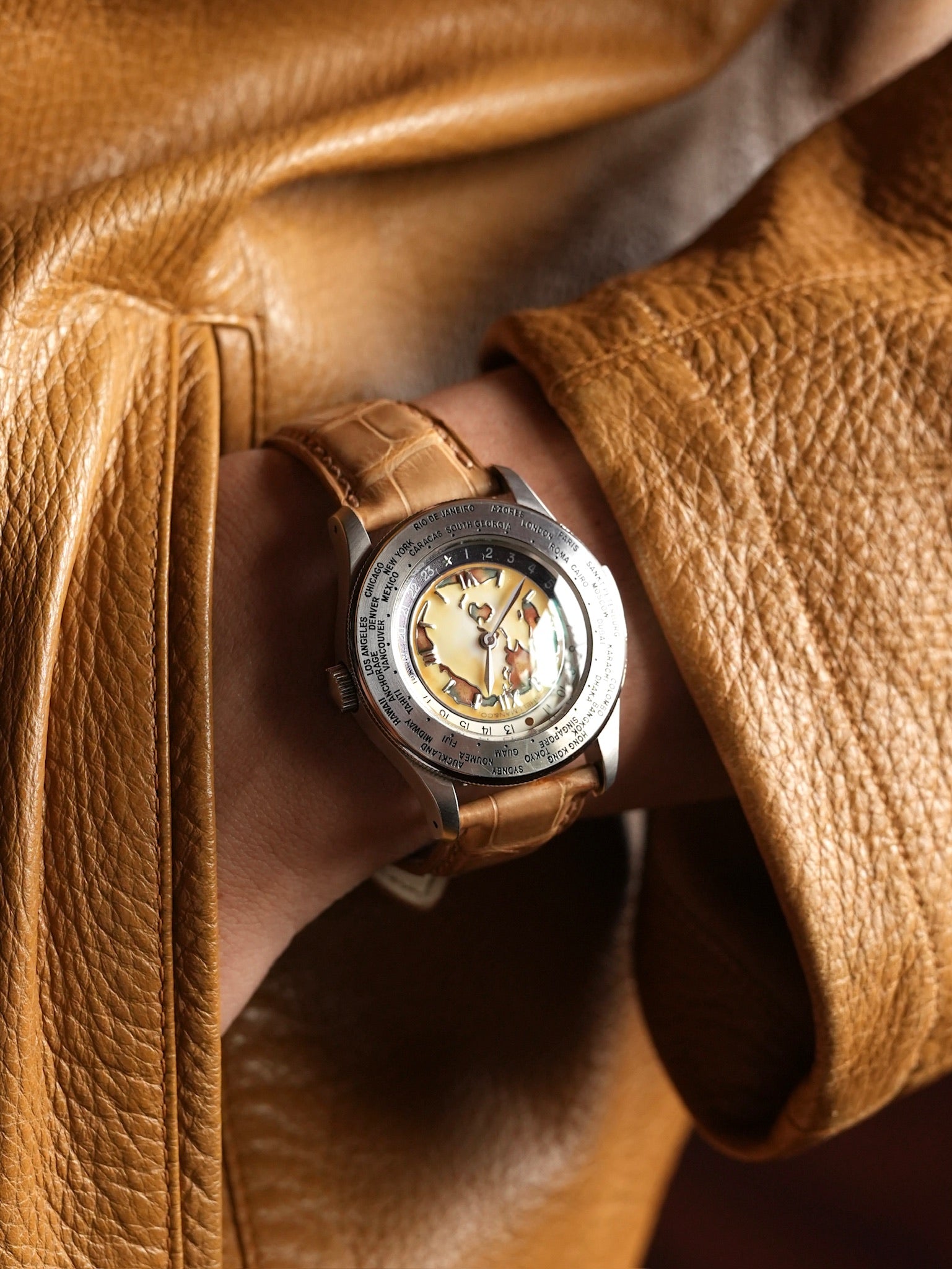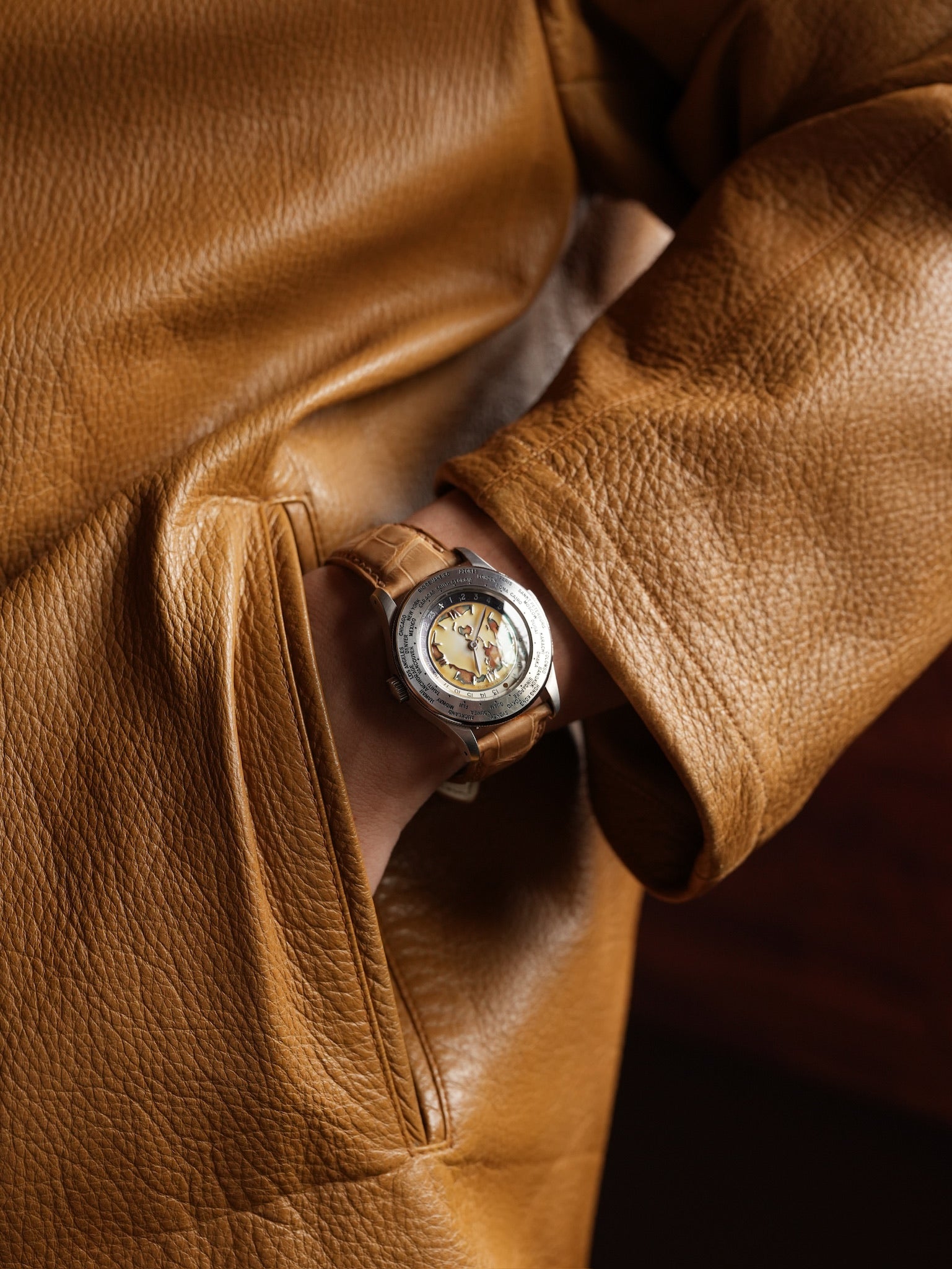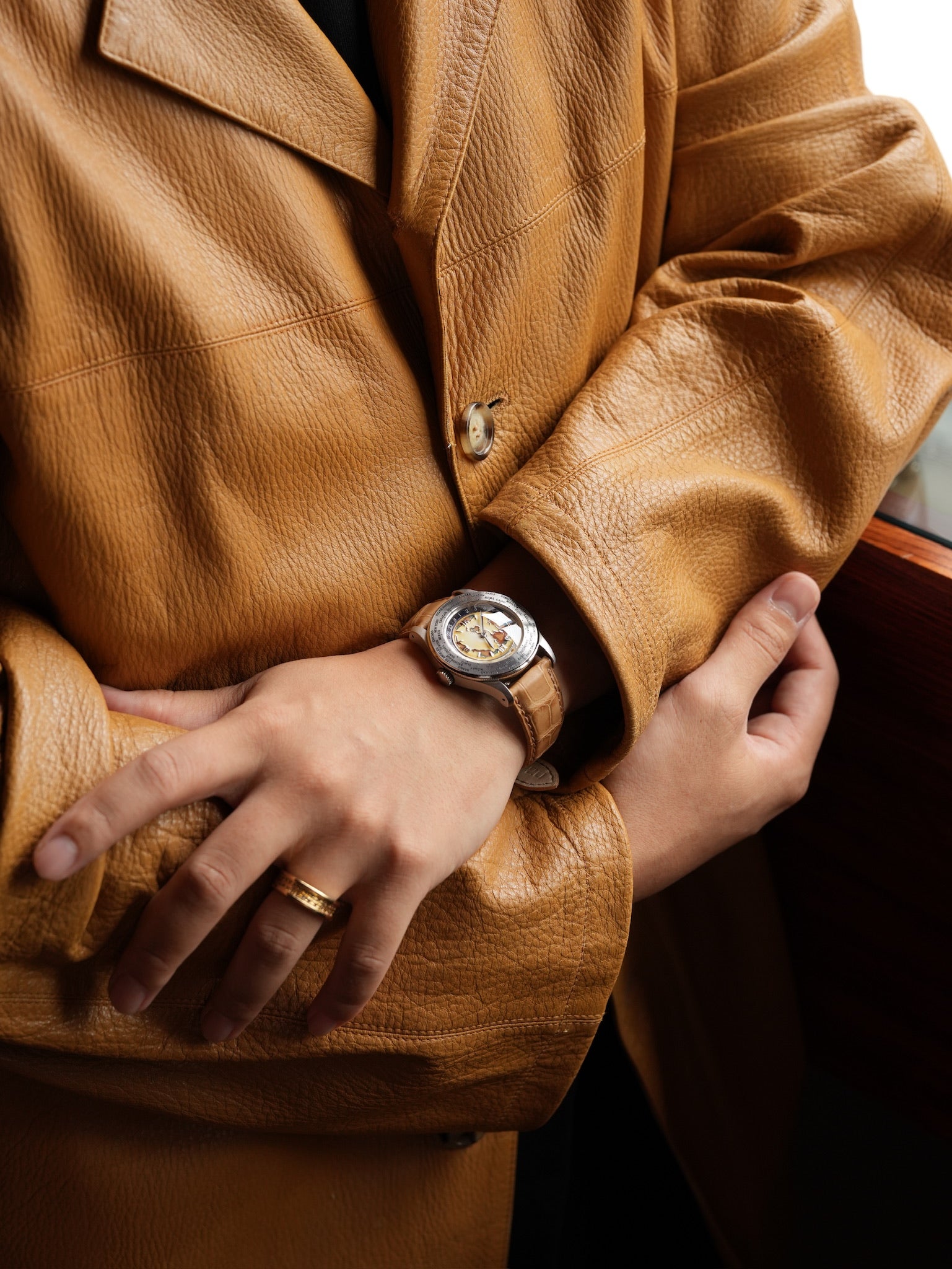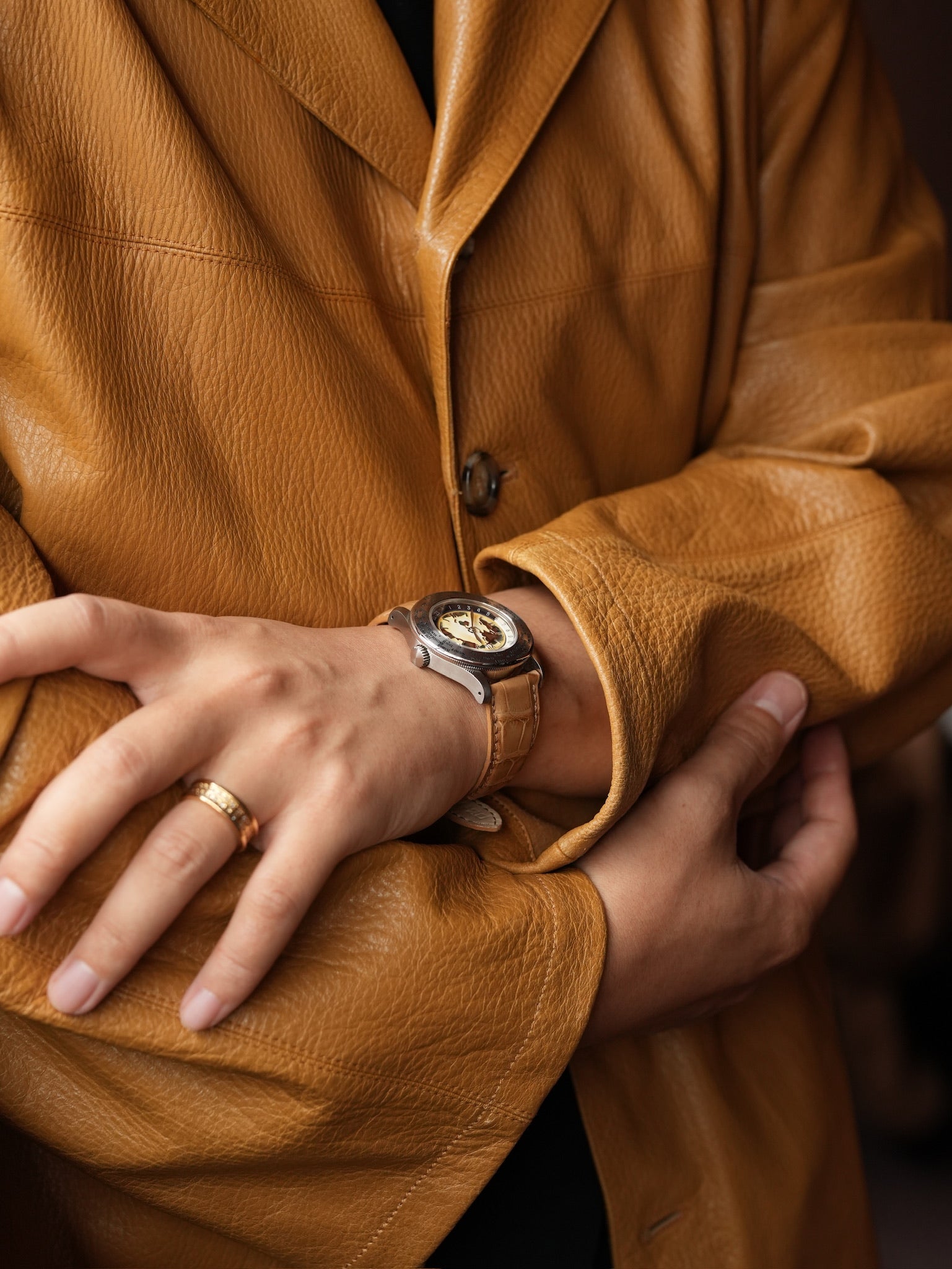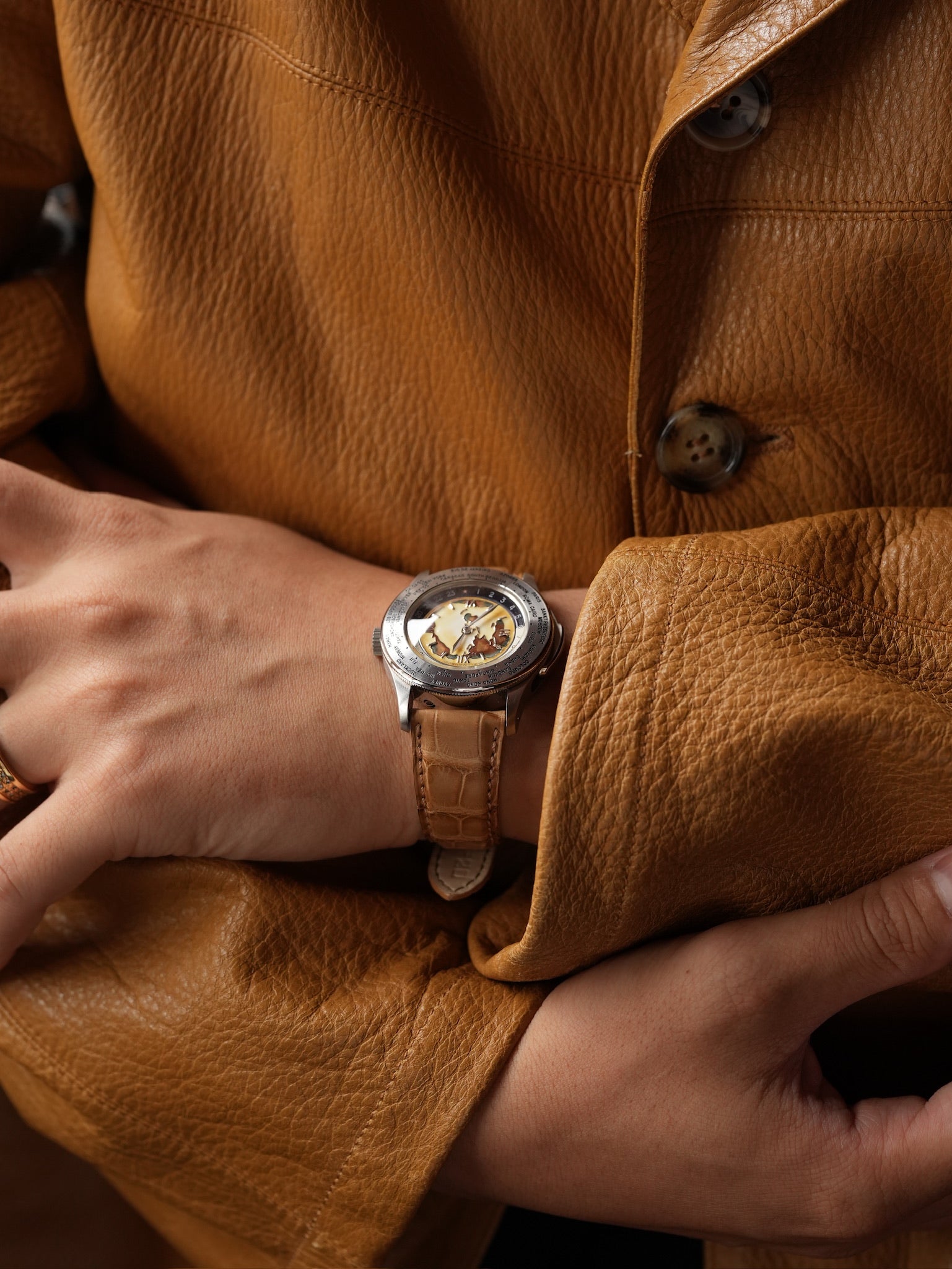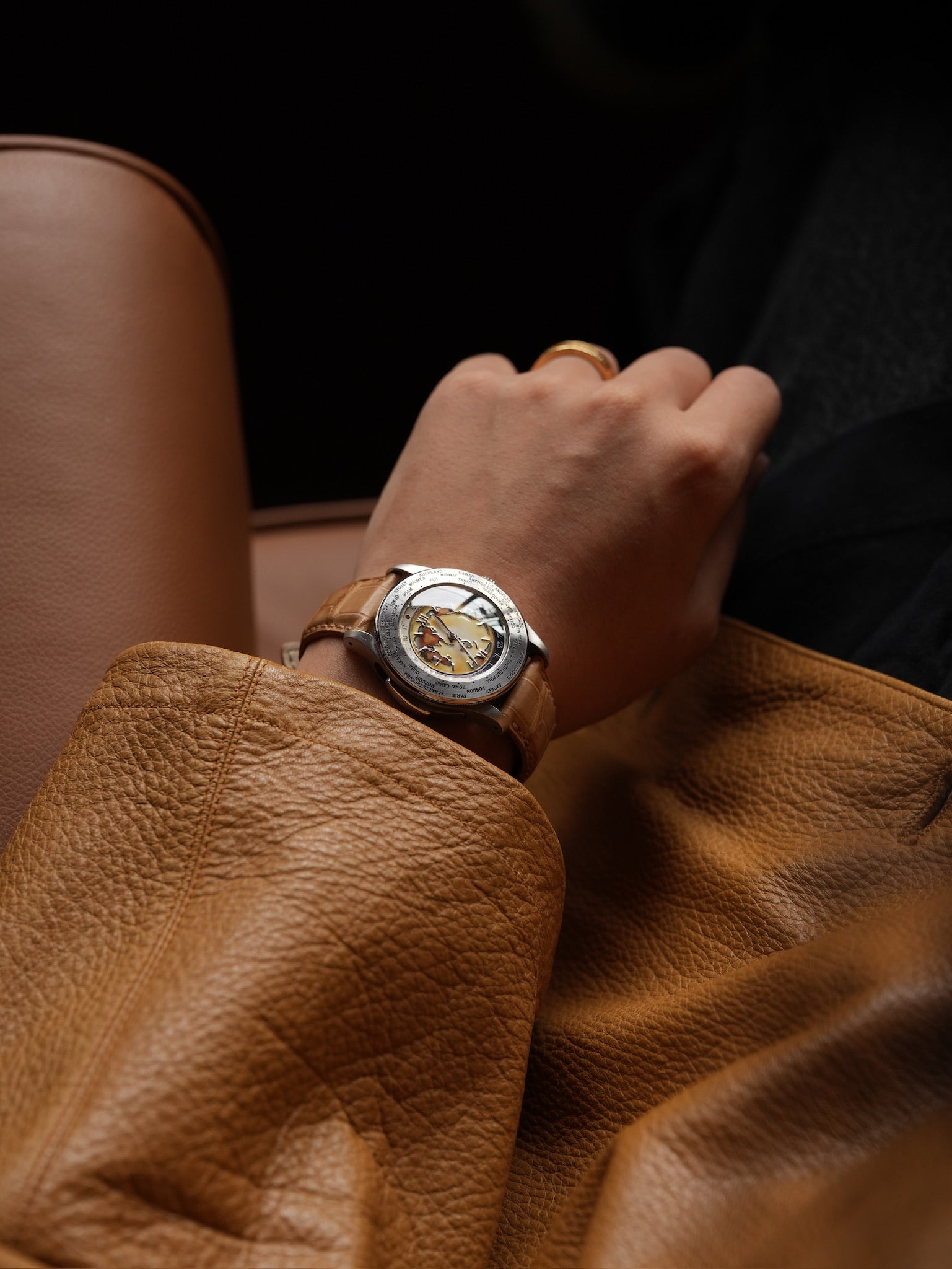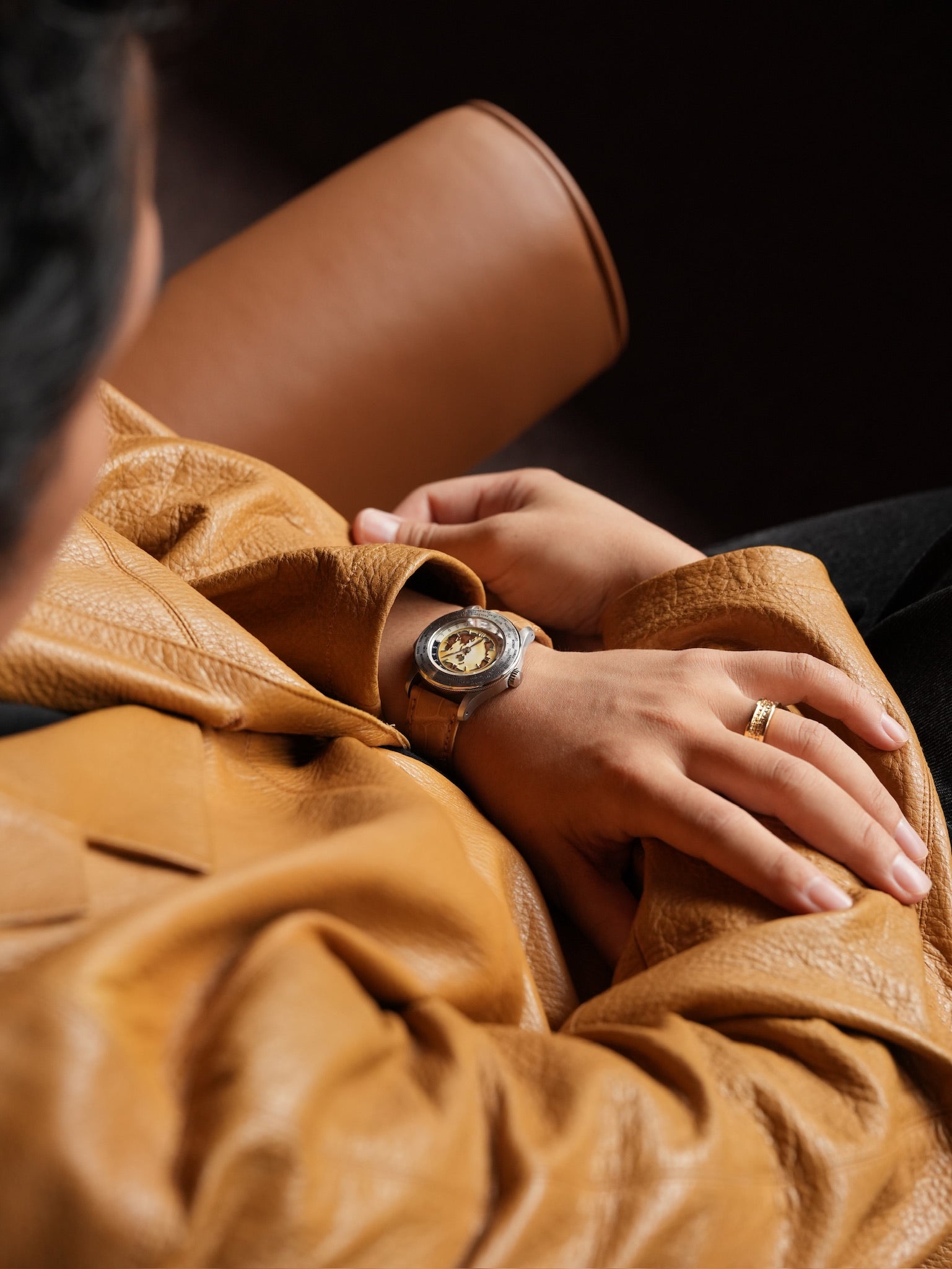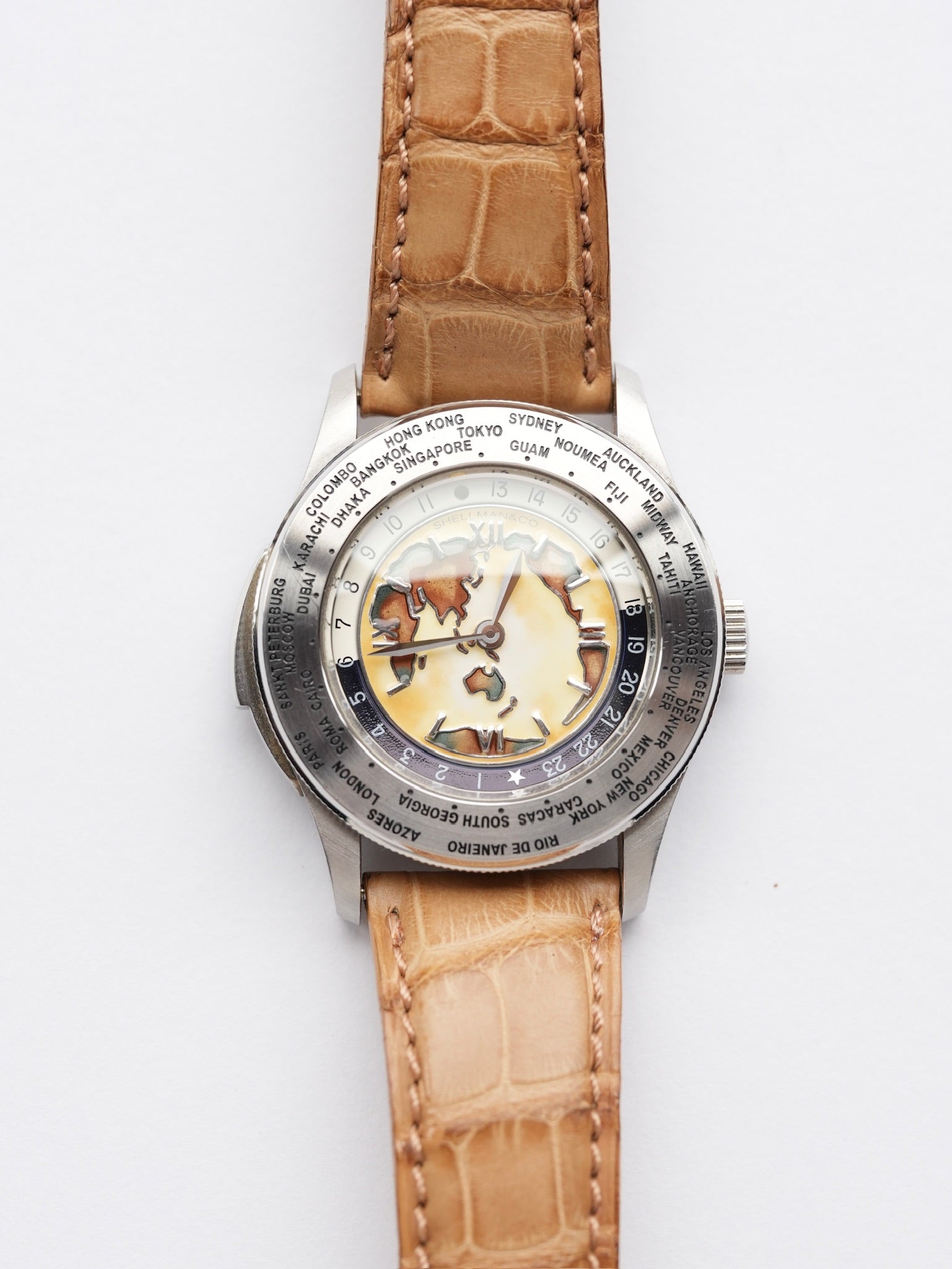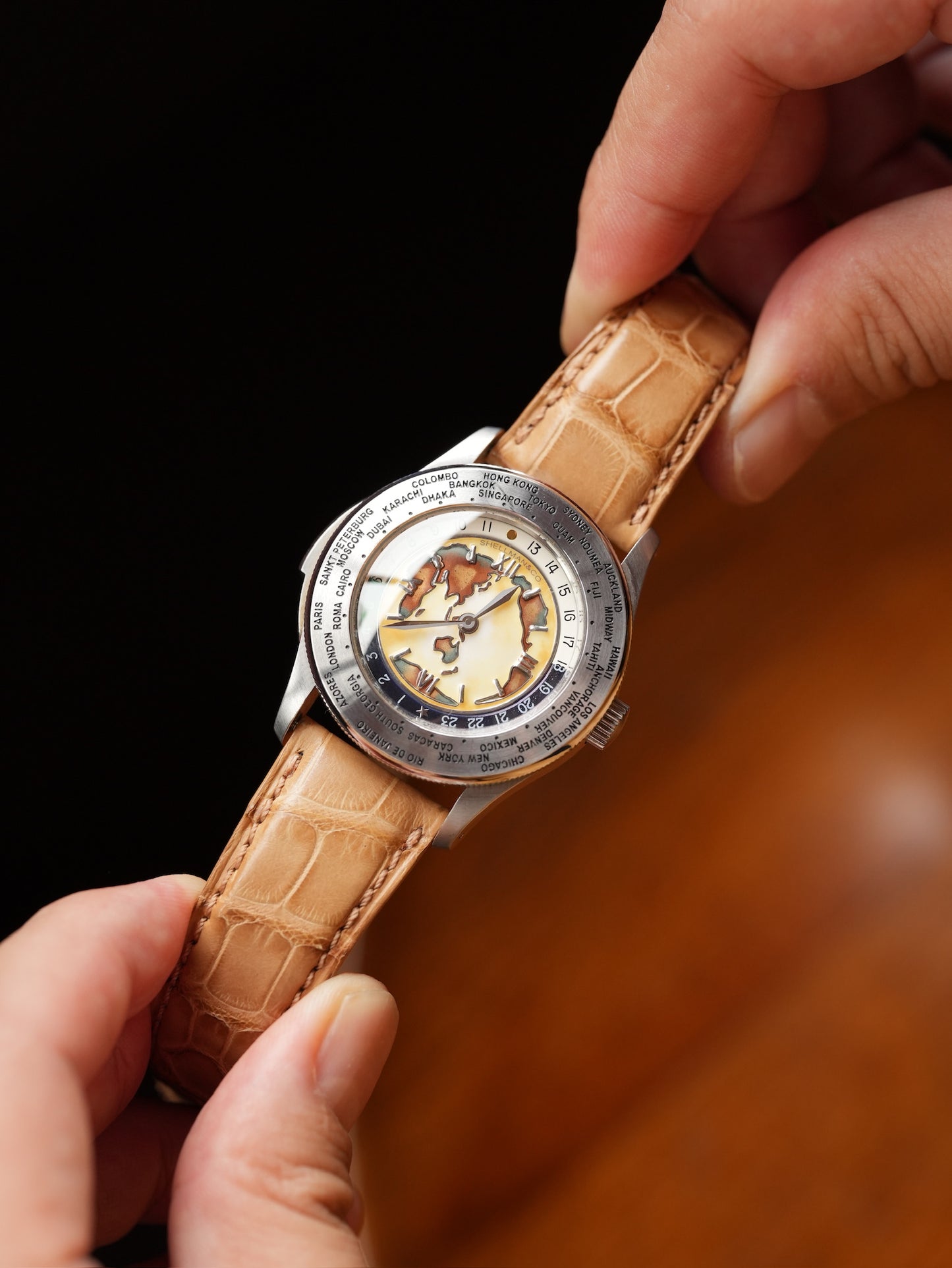
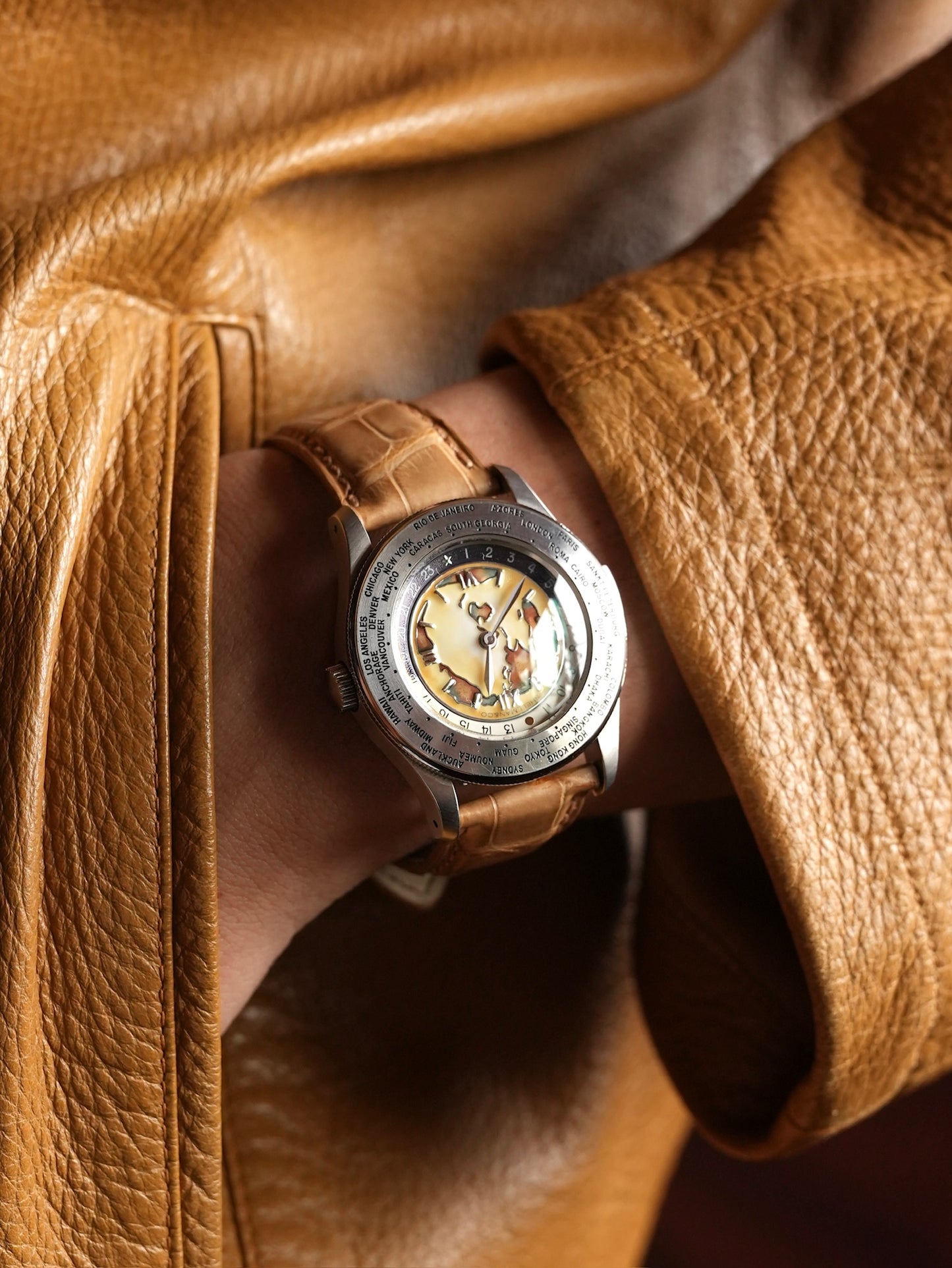
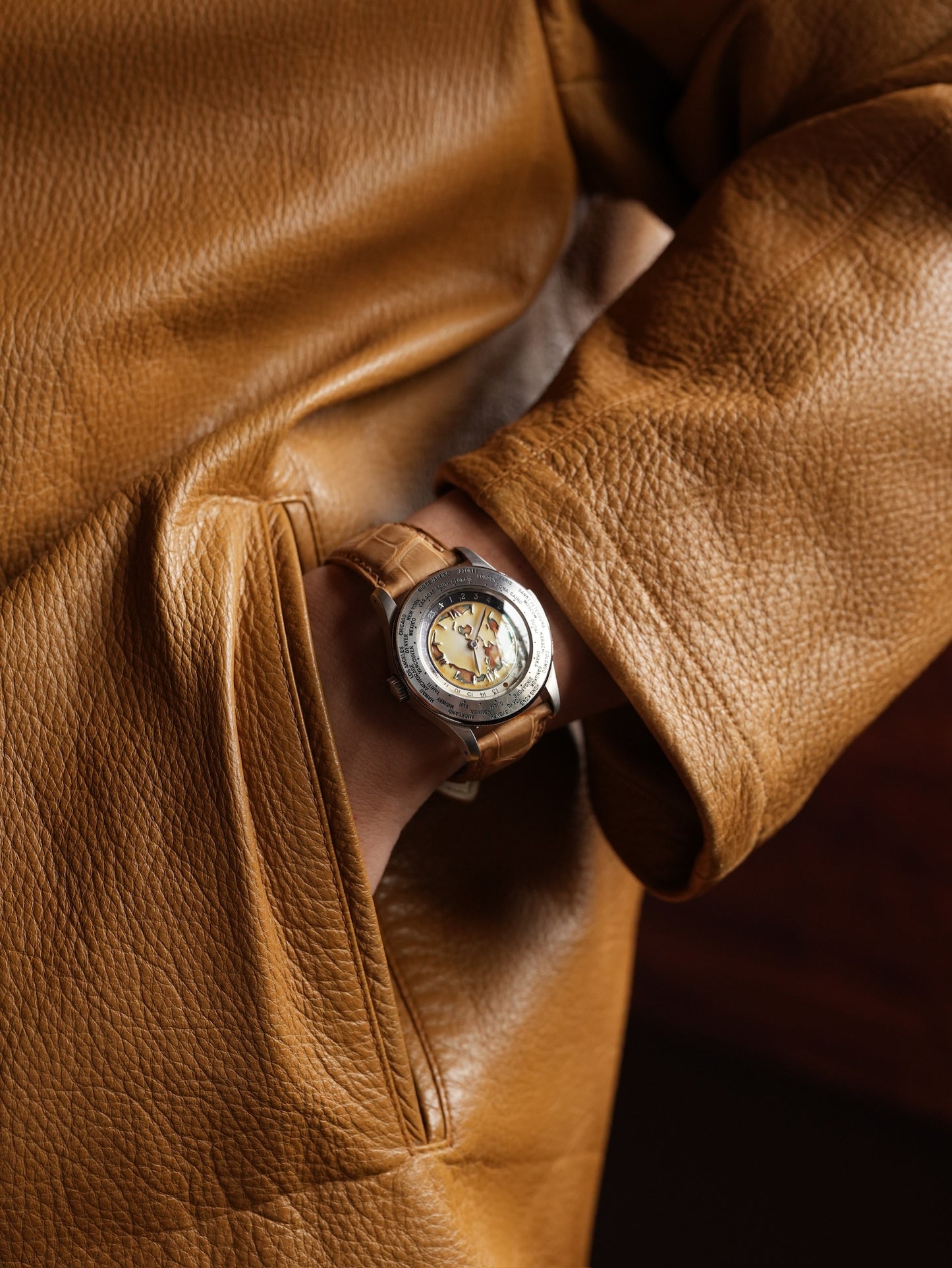
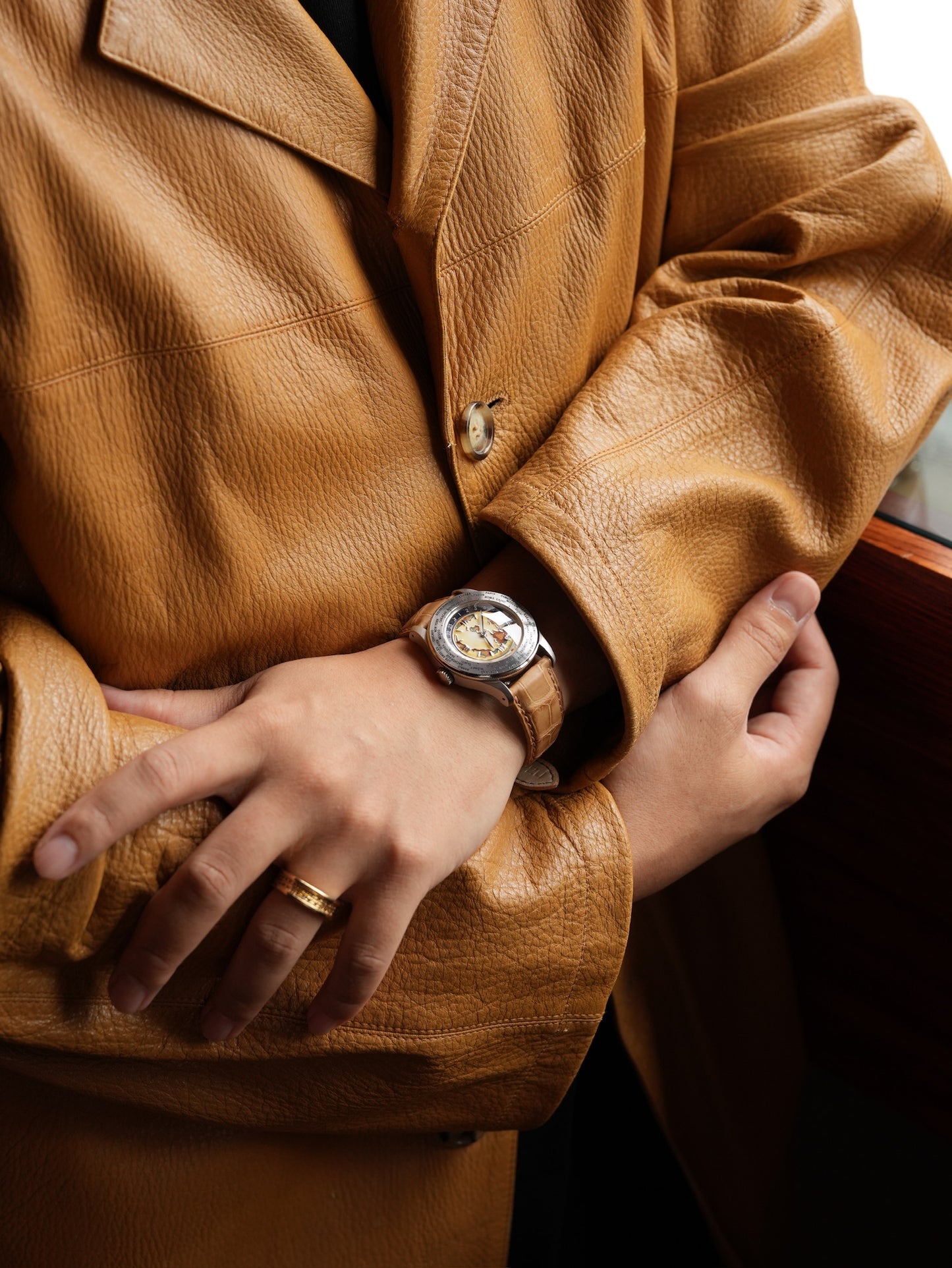
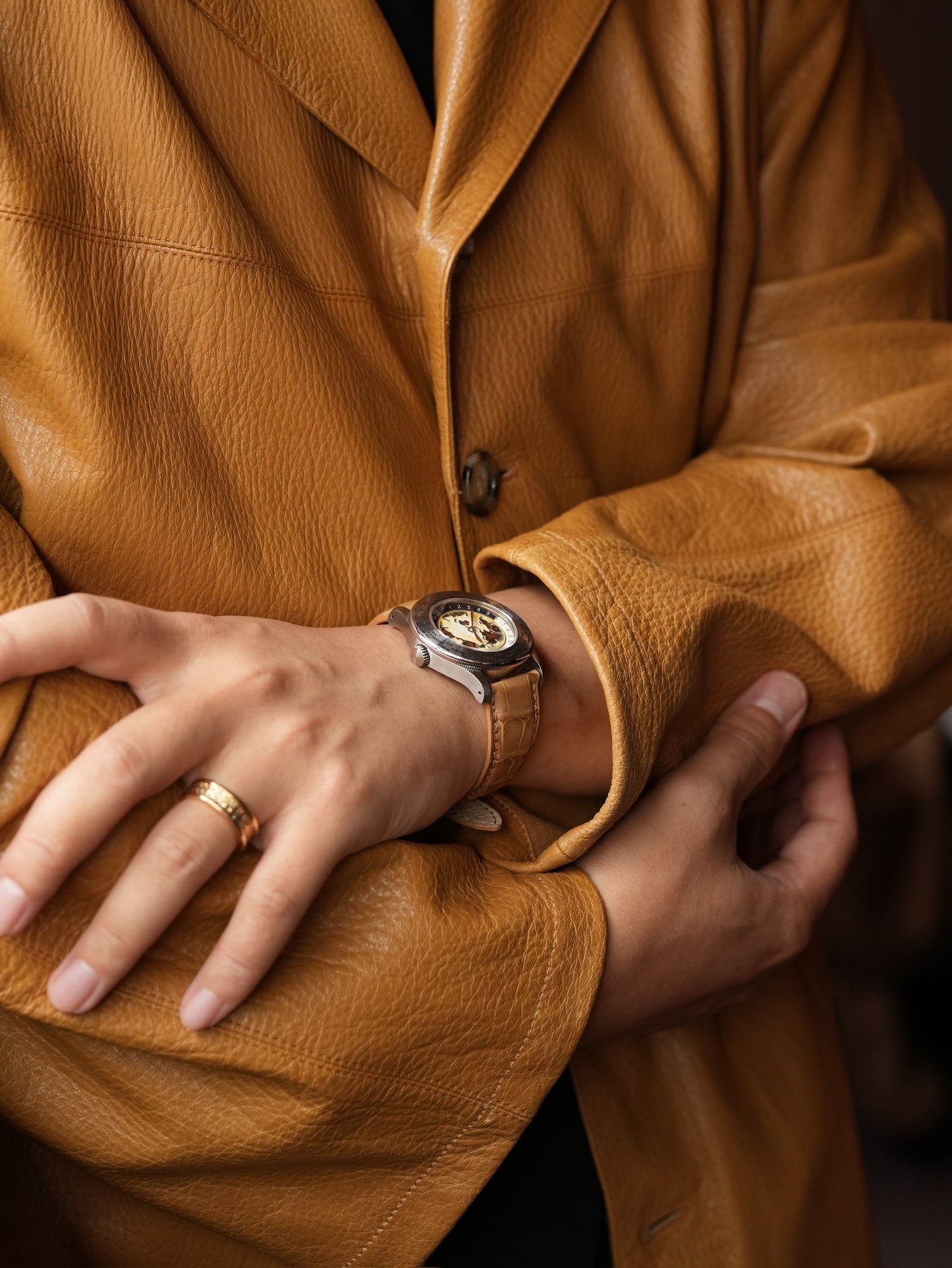
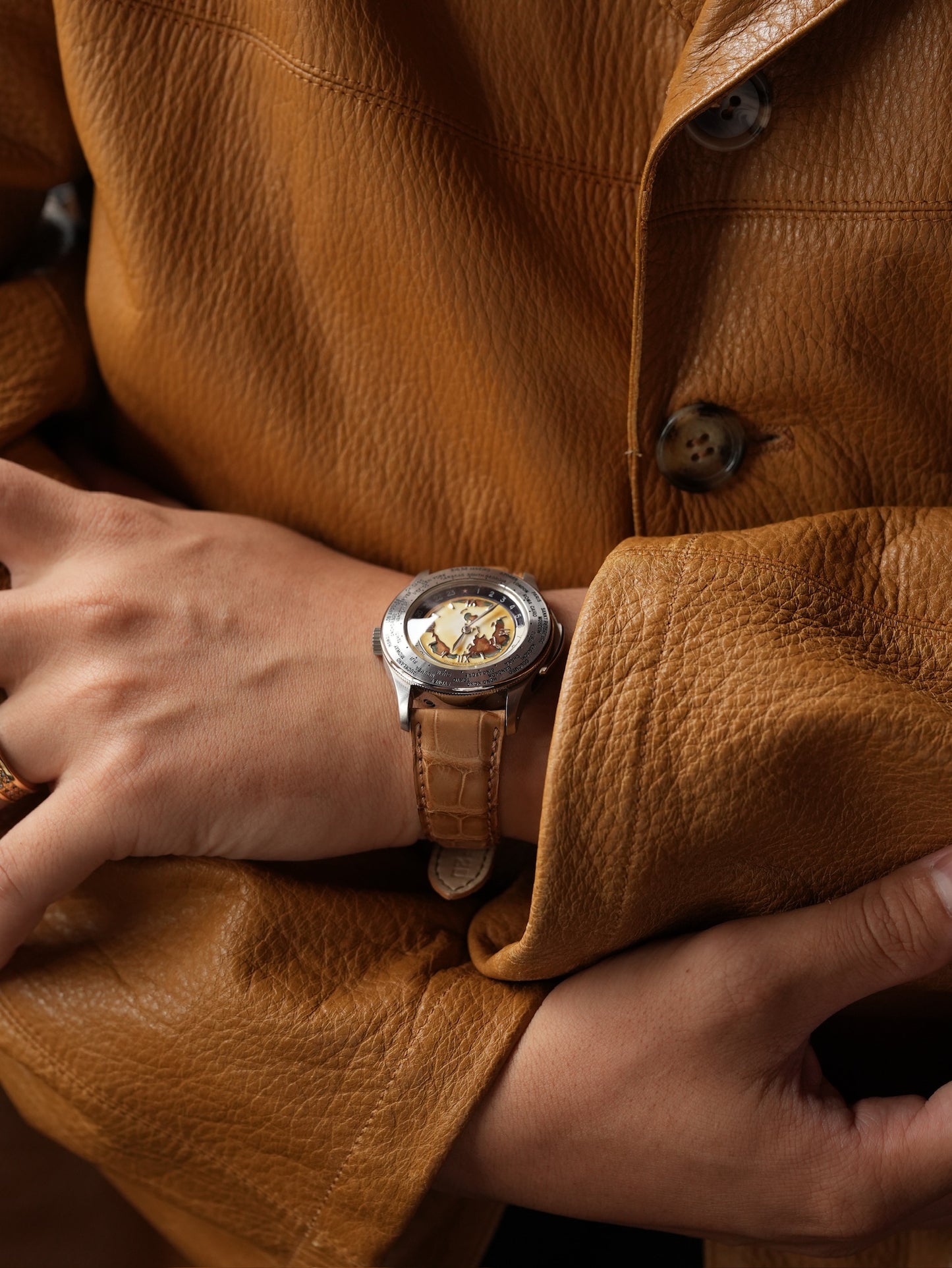
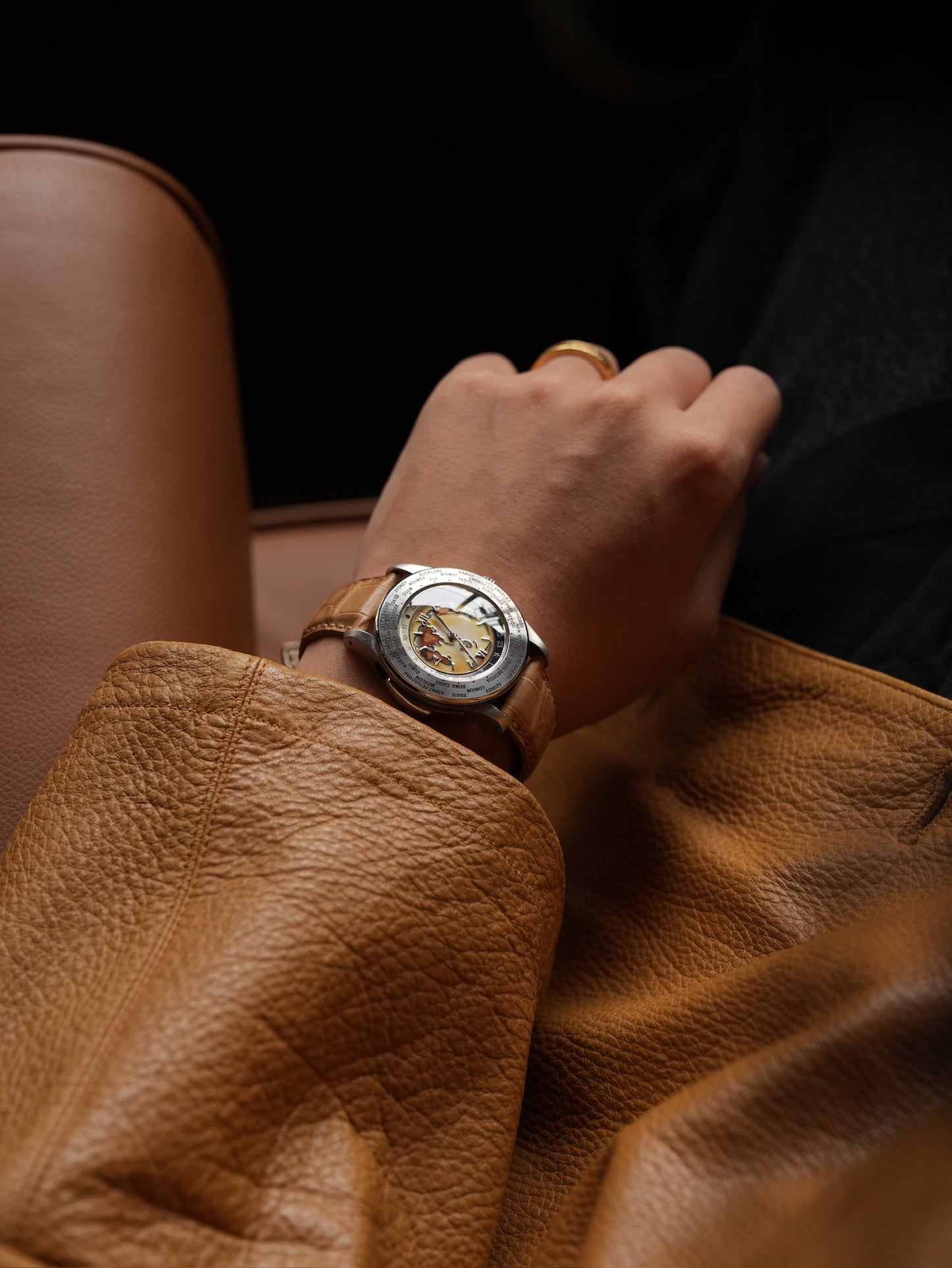
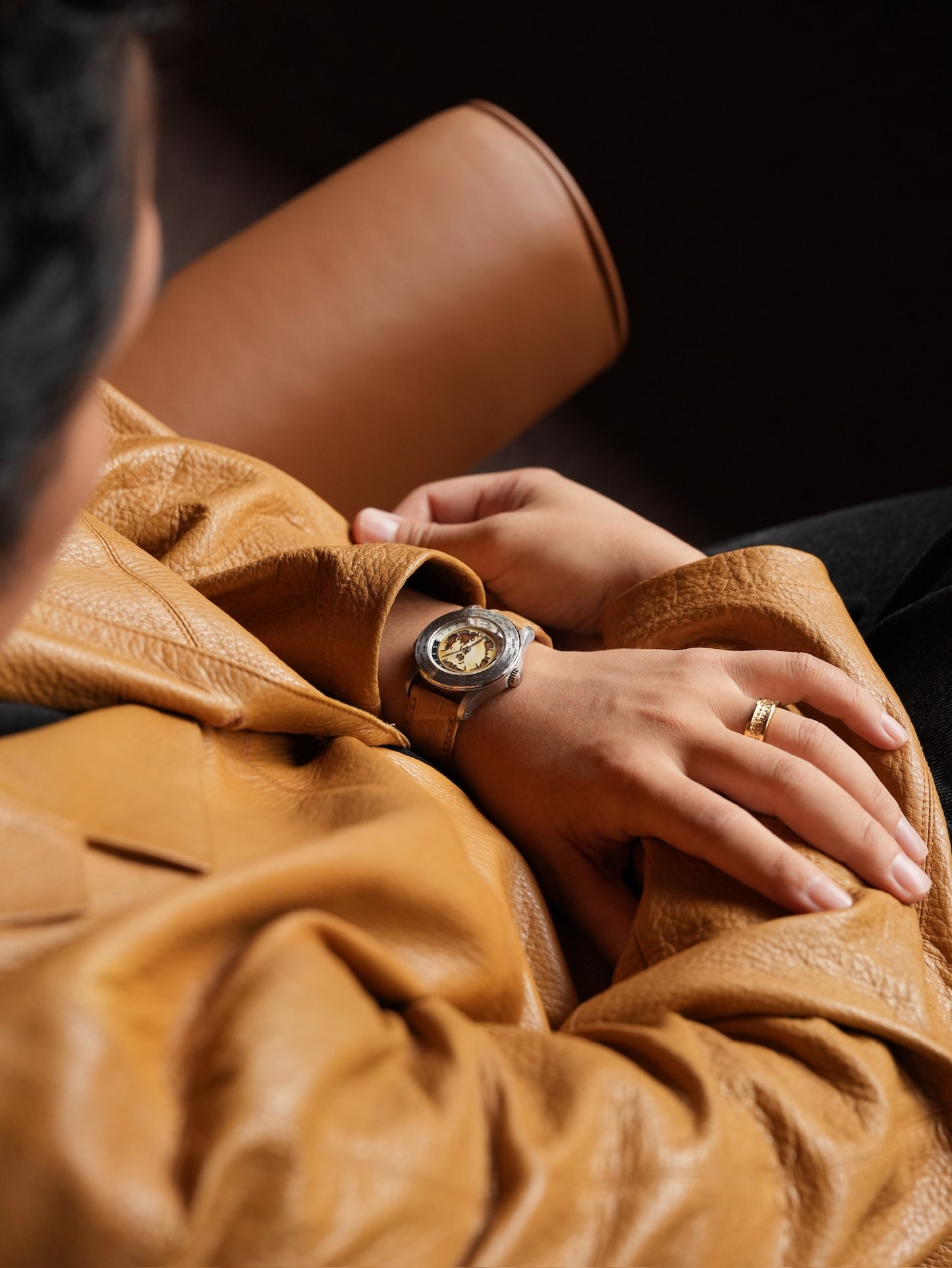
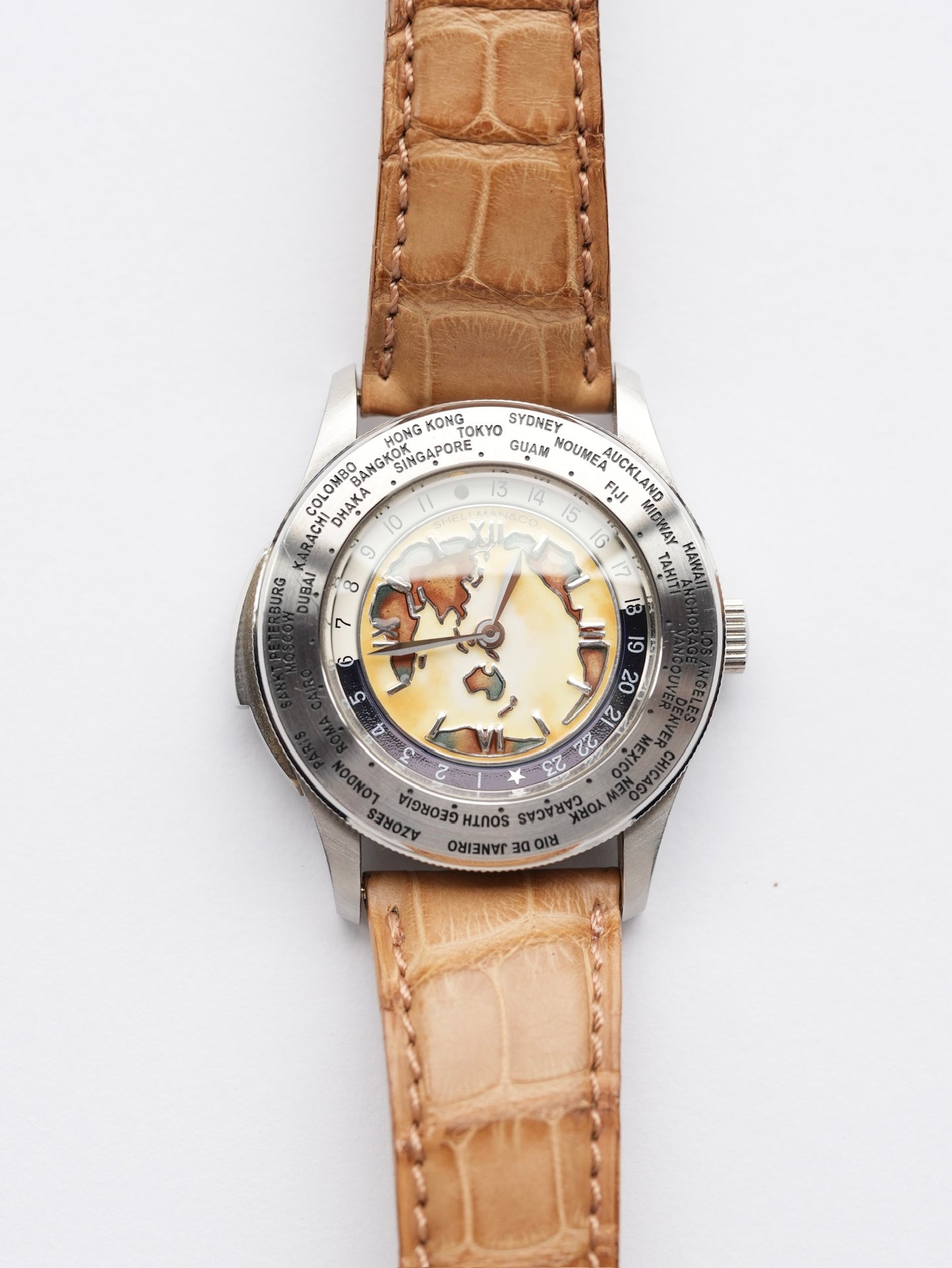
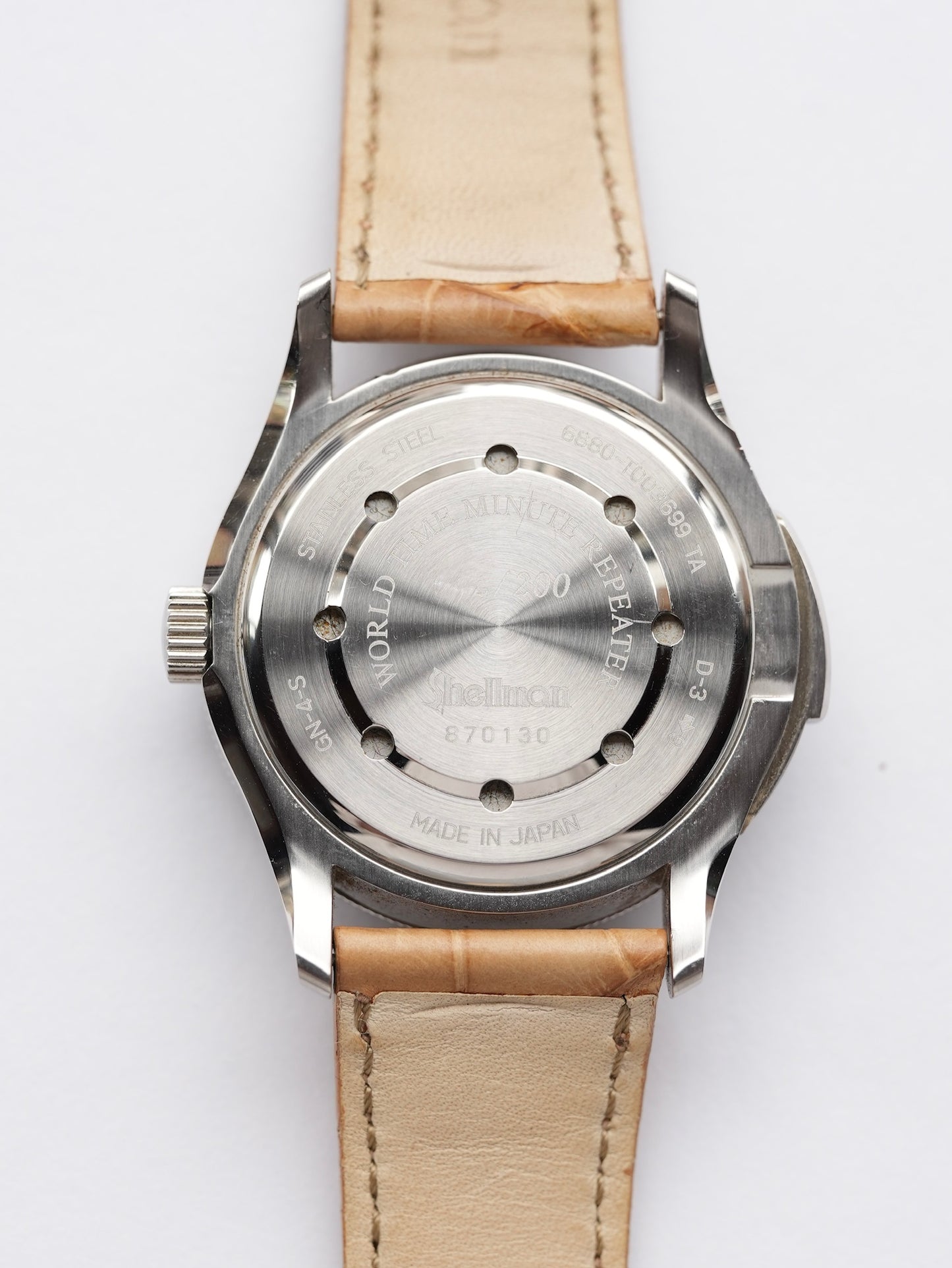
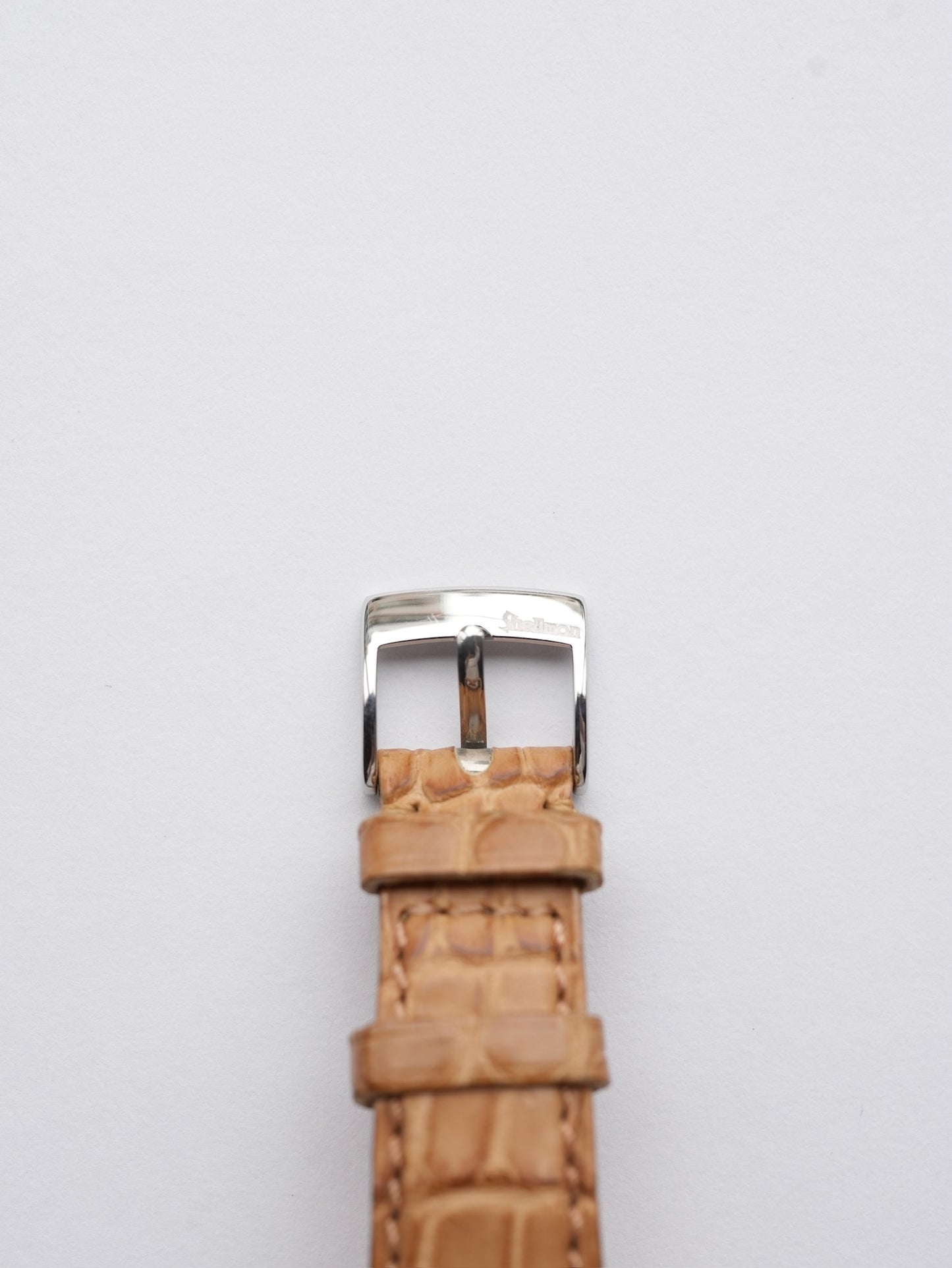
| Product Description |
|---|
| pieces worldwide — is more than a timepiece. It’s a manifesto of beauty and belief. The dial, a luminous cloisonné map, wasn’t printed. It was sculpted with fire. Gold wires, hand-laid to define every coastline. Enamel powder, layered and fired over and over again in a kiln. Then polished to reveal glassy depth. But few make it through. 80–90% of dials were discarded due to bubbles, cracks, or imperfections invisible until the final step. What remains is not just a dial. It is survival. It is proof of obsession. And while others reserved minute repeaters for six-figure mechanical marvels, Shellman had a different idea. They gave this masterpiece a quartz-based repeater, not as a compromise, but as a philosophy: To bring the poetry of chimes to more people. To focus on the experience — not just the mechanism. Their ambition? “To craft a cloisonné that even Patek couldn’t outshine.” It wasn’t about rivalry — it was about pushing art to its highest form. And now, the world is finally catching up. Cloisonné is being rediscovered — not as decoration, but as a dying art form. In an age ruled by precision and machines, we crave the human hand. We hunger for process, for imperfection, for soul. Only a handful of artisans still master this demanding technique. As their numbers shrink, prices rise — and reverence deepens. To collectors, a cloisonné dial is no longer a feature. It’s a relic of what humans once dared to make. This particular piece is even rarer: Full set. Immaculate condition. The map of the world, with time that sings. This isn’t just a watch. It’s the last echo of a vanishing craft. A silent rebellion against mass production. A moment made audible. |
- Choosing a selection results in a full page refresh.
- Opens in a new window.

